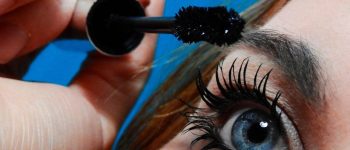Distichiasis (pronounced dis-tic-KAI-asis) is a fascinating condition that leads to the growth of two rows of eyelashes. These additional lashes can range from a few extra lashes to a complete second row. While some individuals may experience minor discomfort, others may face more severe problems. Distichiasis occurs when the eyelashes grow from the inner lining of the eyelid rather than along the edge like normal lashes. This abnormal growth can cause the lashes to touch the eyeball, potentially leading to corneal damage and other eye-related issues.
Causes of Distichiasis
Distichiasis can either be present at birth (congenital) or acquired later in life. It is more common for individuals to develop this condition later in life. Those with congenital distichiasis may not experience symptoms until they are at least 5 years old. On the other hand, acquired distichiasis can be caused by chronic irritation at the site of the eyelashes, severe inflammation of the eyelid, or a chemical injury to the eyes. A comprehensive eye exam using a slit-lamp can help diagnose the condition.
Normal Eyelashes vs. Distichiasis
Is there a difference between normal eyelashes and those that grow due to distichiasis? While some cases of distichiasis result in lashes that are full and similar to normal growth lashes, most often they are thinner, softer, and shorter. It is common for these lashes to grow inward towards the eye. Interestingly, individuals with congenital distichiasis may not experience any symptoms until around 5 years of age. An example of someone famous for her eyes and an incredible set of lashes is Elizabeth Taylor.
Elizabeth Taylor and Distichiasis
Elizabeth Taylor, considered one of the most beautiful women of her time, had distichiasis. She had twice as many eyelashes as most actresses of her day. Although Taylor benefited from her twin set of lashes, not everyone with distichiasis is as fortunate. Some individuals may experience minor discomfort, while others may develop complications that require professional eye care.
Symptoms of Distichiasis
While some individuals with distichiasis may not experience any symptoms, others may face various issues depending on factors such as the lashes rubbing against the cornea. Common symptoms include light sensitivity (photophobia), eye redness, a gritty feeling known as foreign body sensation, soreness or inflammation of the cornea, and tender eyelid bumps called styes.
What is Lymphedema Distichiasis Syndrome?
Lymphedema distichiasis syndrome (LDS) is an almost always associated with congenital distichiasis. This syndrome affects the transport of fluid throughout the body, leading to swelling or puffiness in the extremities such as the arms, hands, fingers, legs, feet, and toes. Normally, the lymphatic system is responsible for making and moving immune cells and fluids around the body. However, in LDS, this system is interrupted, resulting in complications such as swelling of the extremities, entropion, ptosis, cleft lip and palate, webbed neck, vertebral anomalies, and congenital heart defects. Distichiasis is also a symptom of LDS, with the extra eyelashes present at birth and typically becoming noticeable during puberty.
Treatments for Distichiasis
Individuals without symptoms of distichiasis typically do not require treatment. However, if symptoms do occur, seeking treatment from an eye doctor is recommended. The specific symptoms and risks associated with the condition will determine the recommended treatment options. Non-surgical treatments may include the use of eye drops or ointments to relieve symptoms or the use of soft contact lenses as a barrier between the cornea and the eyelashes. Surgical treatments such as plucking (epilation), cryosurgery, radiofrequency (RF) ablation, or lid splitting surgery may be recommended depending on the severity of the condition. It is crucial to treat distichiasis, as leaving it untreated can lead to potential scarring, thinning, or ulceration of the cornea.
Distichiasis in Dogs
Distichiasis is not limited to humans; dogs can also develop this condition. The symptoms of distichiasis in dogs are similar to those experienced by humans, including eye redness, squinting, discharge, rubbing, signs of a corneal ulcer, and swollen eyes. Certain dog breeds are more prone to distichiasis, including the American Cocker Spaniel, Cavalier King Charles Spaniel, Shih Tzu, Lhasa Apso, Dachshund, Shetland Sheepdog, Golden Retriever, Chesapeake Retriever, Bulldog, Boston Terrier, Pug, Boxer Dog, and Pekingese. Diagnosis in dogs requires an eye exam, and similar non-surgical and surgical treatments may be recommended.
To learn more about distichiasis, visit Ekilove.




